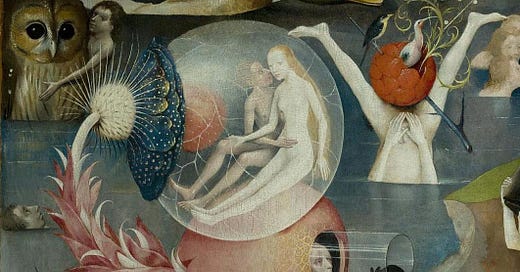Last summer my daughter and I travelled through Spain. We landed in Madrid, a city I had only passed through years ago on my way to Granada. We travelled to Valencia (before the terrible floods), then onto Ibiza, staying in each place with our friend, the writer / actor Puy Navarro and her family. The European Cup was in full gear, so each afternoon found us in another bar, at three and at six, watching a game. My daughter has been on various soccer leagues since she was eight. Soccer is everywhere in Europe, and we wanted to be part of it. Our first morning in Madrid we went to the Prado, where my daughter had what seemed like her first art epiphany. It might have been as we stood before Bosch’s enormous The Garden of Earthly Delights, or maybe it was Caravaggio’s David with Head of Goliath. It might have been Valazquez’s La Meninas, or maybe it was the room of Goya’s Black Paintings—the one with the dog’s head under a yellow sky held her the longest. Being an athlete, she loved the Greek statues, their muscles pulsing through the marble. We’ve been taking her to museums since she was born—museums are our church (lately she’s been taking us to a real church—more on that later)—but the work in the Prado resonated for her. To resonate with something means that you have a deep emotional connection to it. This connection might be mysterious—it evokes a feeling, but you cannot say why. Its root is the Latin resonantia, to echo. She was sixteen, and she asked to go back the next day, to see the same work, again.
Keep reading with a 7-day free trial
Subscribe to notes on bewilderment to keep reading this post and get 7 days of free access to the full post archives.




